Introduction: A Snapshot of Prehistoric Ingenuity
Akrotiri, the prehistoric settlement on Santorini, Greece, is often hailed as the “Pompeii of the Aegean.” Buried under volcanic ash during the cataclysmic eruption of Thera around 1600 BCE, it has revealed extraordinary insights into ancient life. Among its most fascinating finds is a Cycladic figurine discovered within a Late Bronze Age chest in the ‘House of the Benches.’ This artifact, over 1,000 years older than the chest itself, offers a glimpse into the cultural and symbolic world of its time.
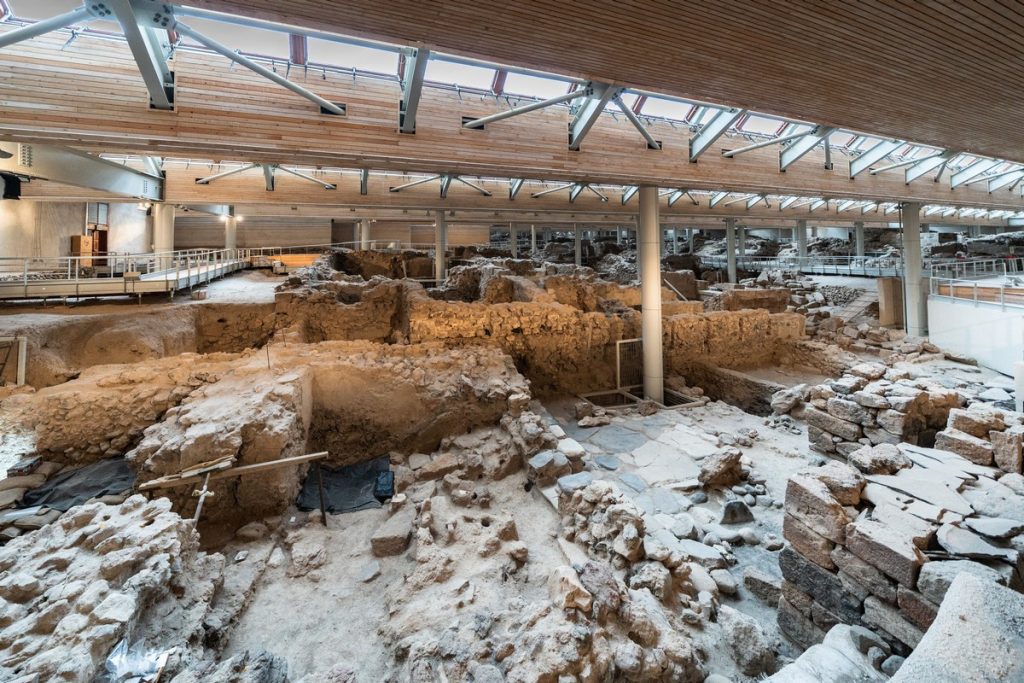
The Cycladic Figurine: A Link to the Past
This figurine, a hallmark of Cycladic art from around 3000 BCE, is characterized by its minimalist, abstract design. Typically associated with fertility, deities, or ancestral veneration, the artifact holds immense symbolic value. Its presence in a Bronze Age chest raises intriguing questions: Was it an heirloom, preserved across generations, or a sacred object used in ceremonies?
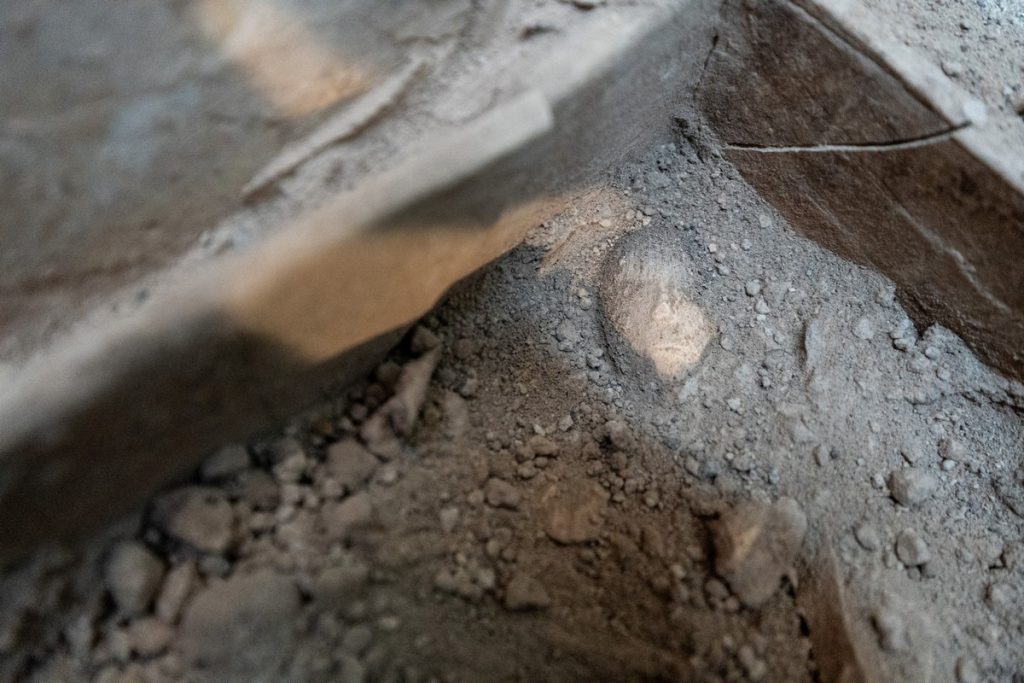
The discovery of this figurine suggests it was more than a decorative item—it likely held spiritual or cultural significance. Found alongside other objects, its deliberate placement implies a role in rituals or familial memory, offering a rare window into the belief systems of the time.
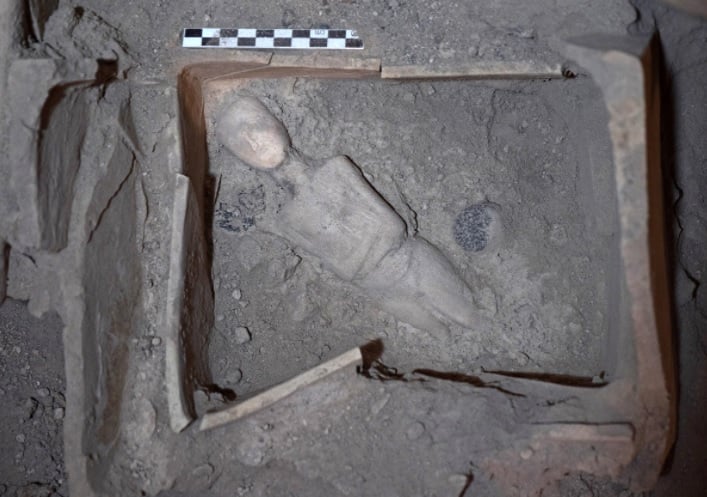
Akrotiri: A Prehistoric Maritime Power
Dubbed the “Venice of the Prehistoric Aegean,” Akrotiri boasted advanced urban planning, including multi-storey buildings, paved streets, and an intricate drainage system. Its strategic coastal location positioned it as a vital hub of maritime trade, with evidence of exchanges spanning Minoan Crete, mainland Greece, and even Egypt.
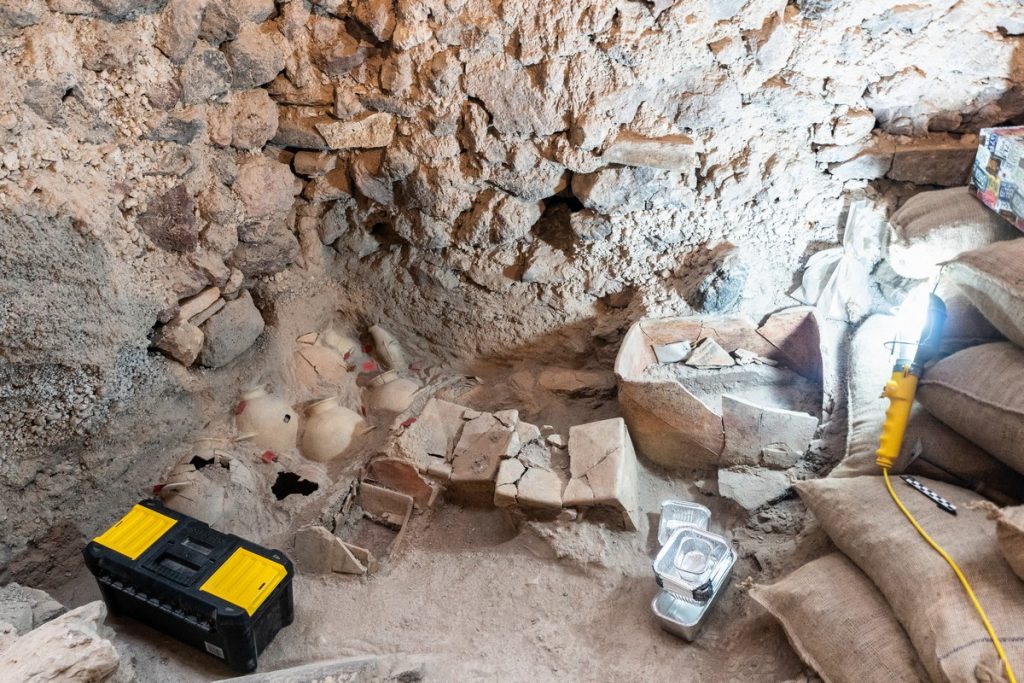
The Cycladic figurine’s presence underscores the interconnectedness of ancient cultures and highlights Akrotiri’s role in preserving and transmitting artistic and spiritual traditions. This discovery adds another layer to the understanding of Akrotiri as a thriving and cosmopolitan center.
Cultural and Spiritual Context
The figurine was unearthed in the ‘House of the Benches,’ a structure believed to have held public or sacred functions. The presence of benches and carefully curate
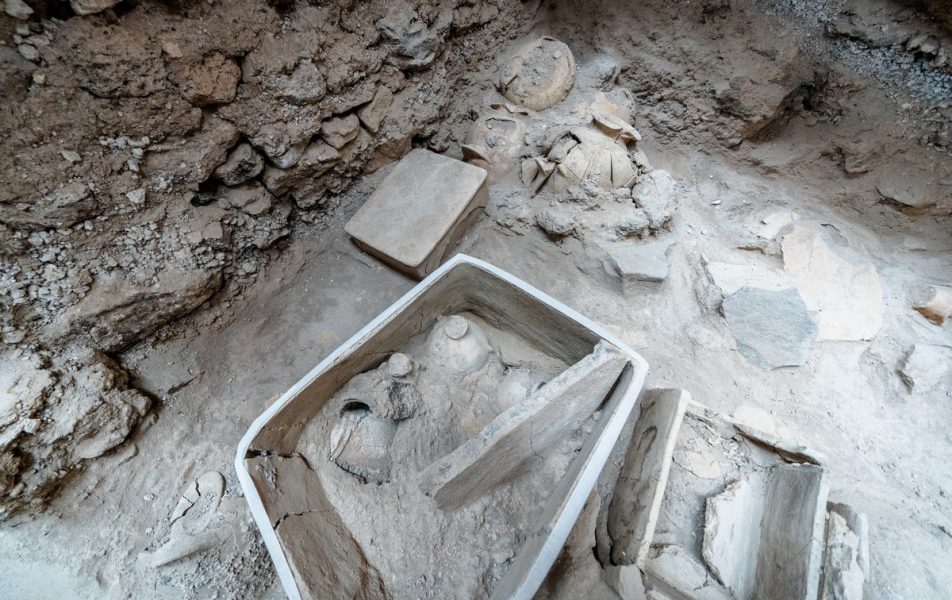
Scholars propose two interpretations: the figurine may have been an heirloom, symbolizing continuity and ancestral connection, or it may have been an offering, deposited in a ritual to honor deities or ancestors. Either way, its presence speaks to the spiritual depth of A
A Civilization Frozen in Time
Akrotiri’s preservation under volcanic ash provides an unparalleled snapshot of prehistoric life. Its vibrant frescoes depict nature, rituals, and daily activities, while its sophisticated infrastructure reflects a highly organized and technologically advanced society. These findings, combined with artifacts like the Cycladic figurine, illuminate the complex interplay of art, religion, and urban living in the prehistoric Aegean.
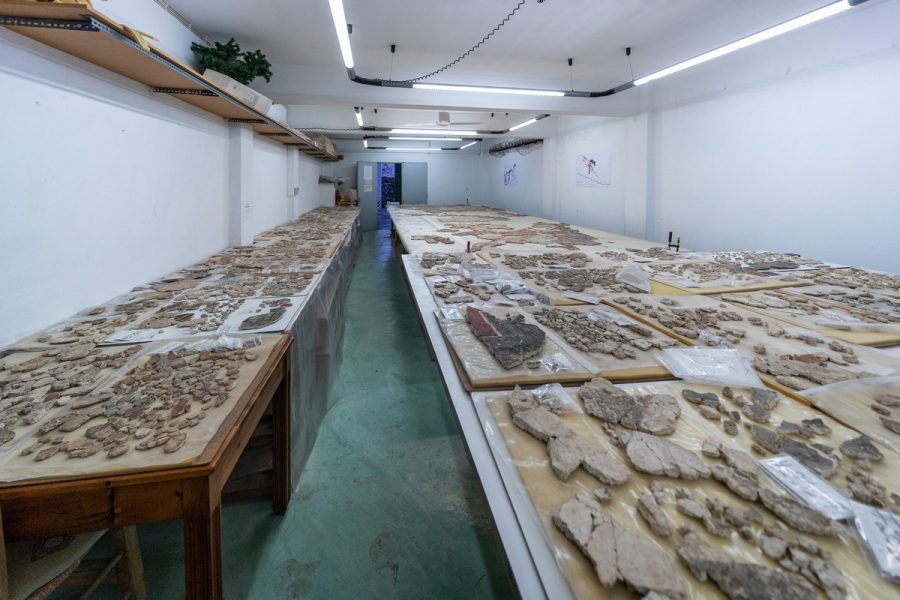
Conclusion: A Window into Ancient Worlds
The Cycladic figurine from Akrotiri is more than an archaeological artifact—it is a testament to the spiritual and cultural life of a sophisticated society. Its discovery underscores the interconnectedness of ancient civilizations and the enduring importance of art and symbolism. As excavations continue, Akrotiri promises to reveal even more about the resilience and ingenuity of its inhabitants, solidifying its status as a prehistoric treasure trove.

